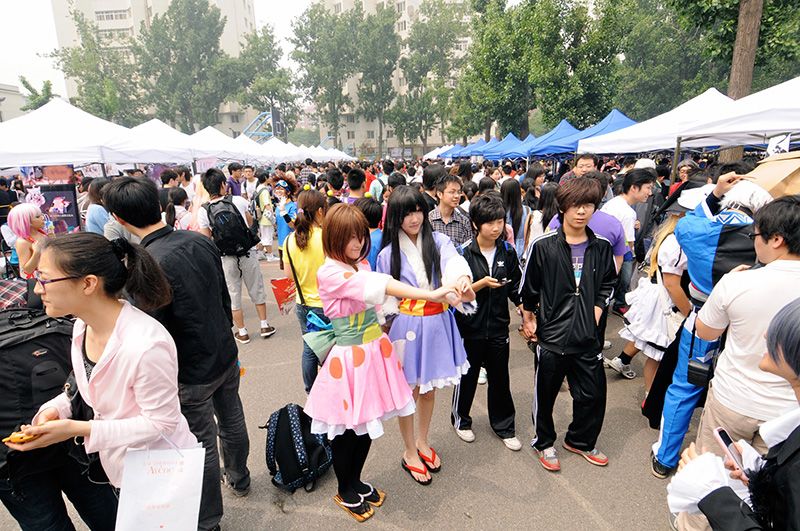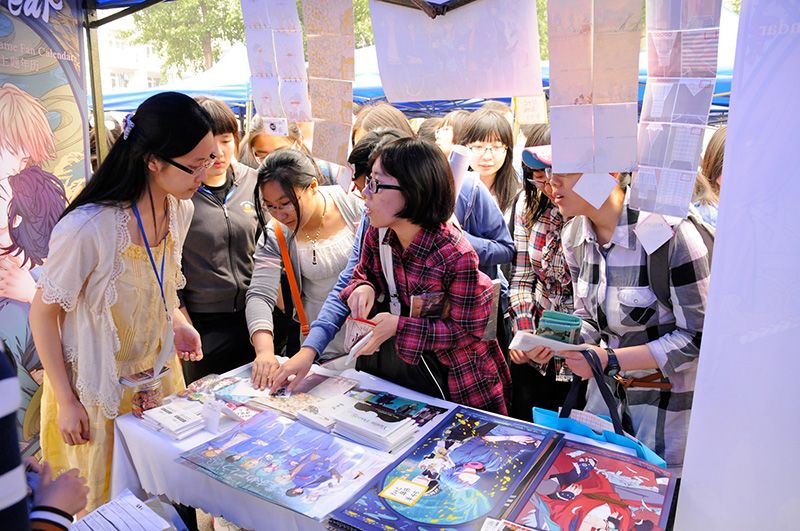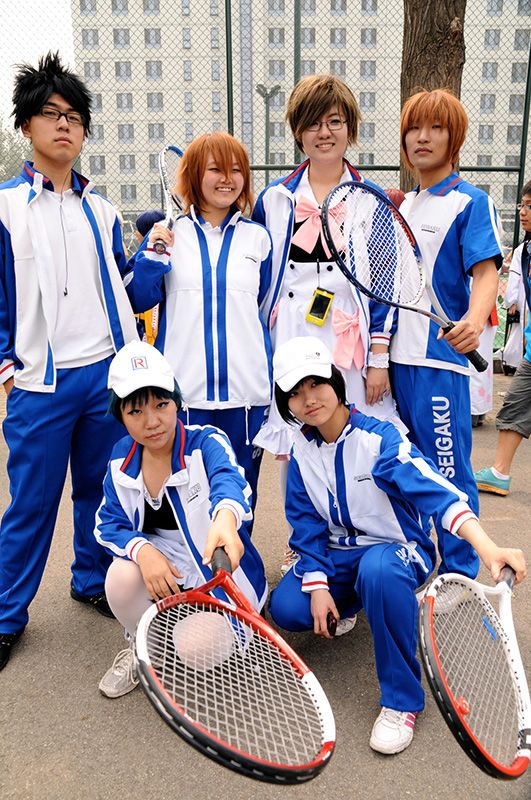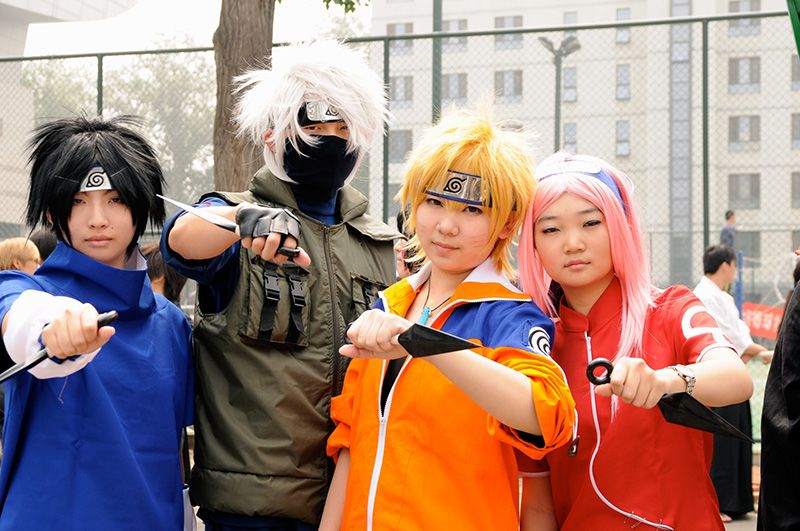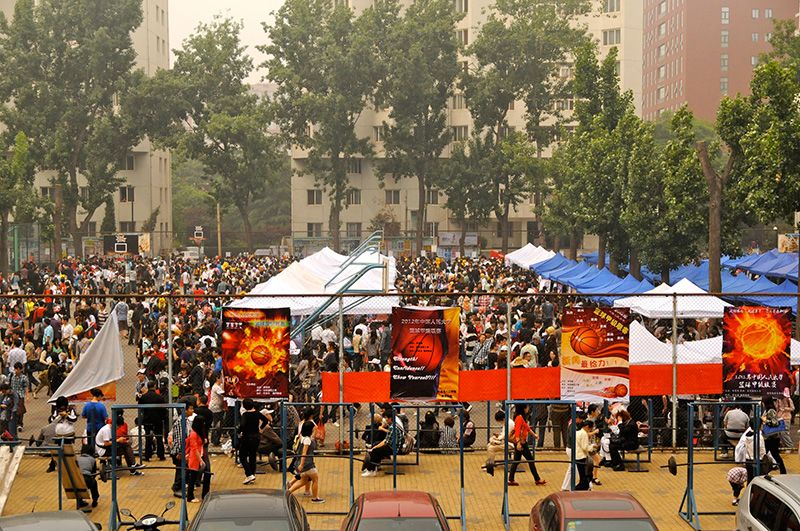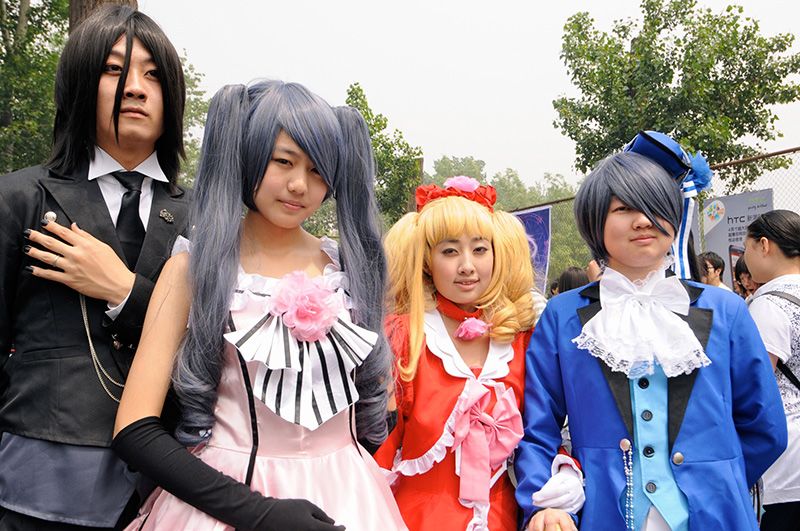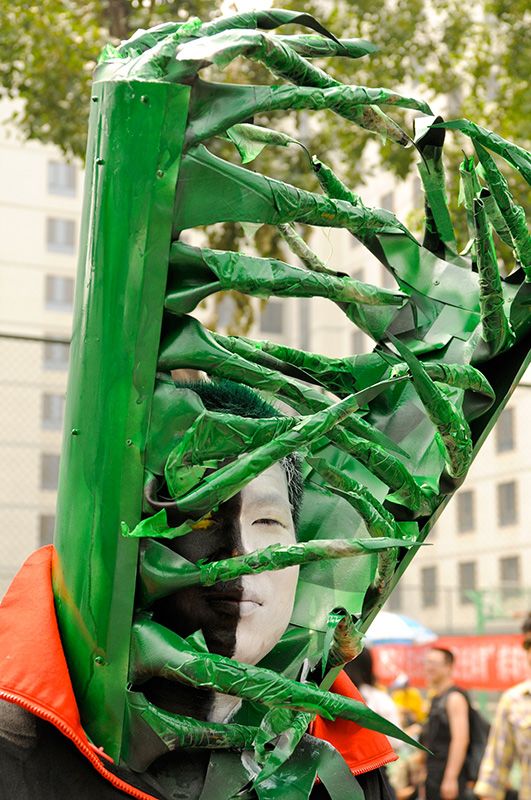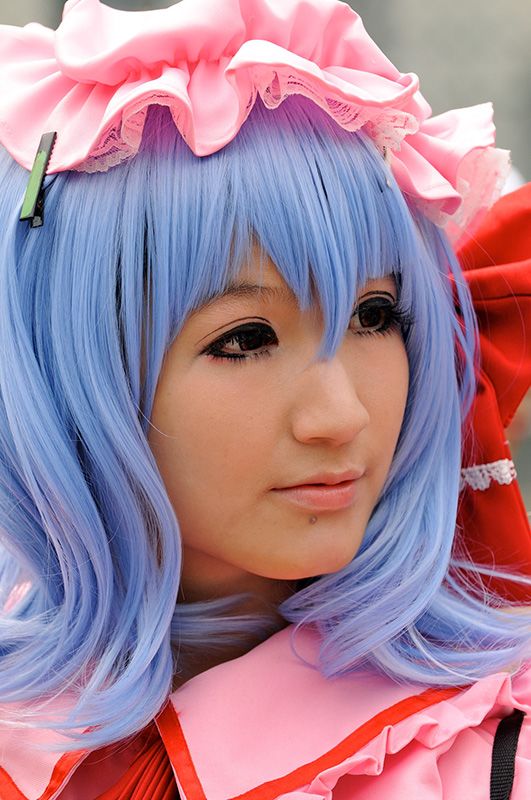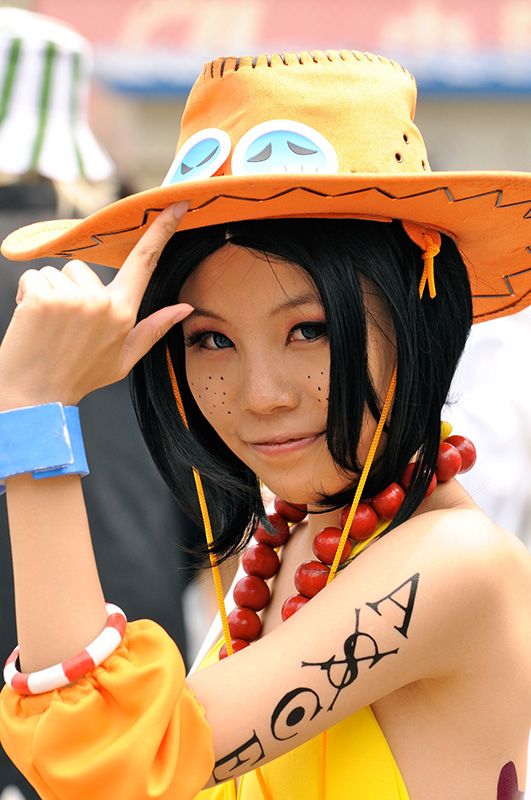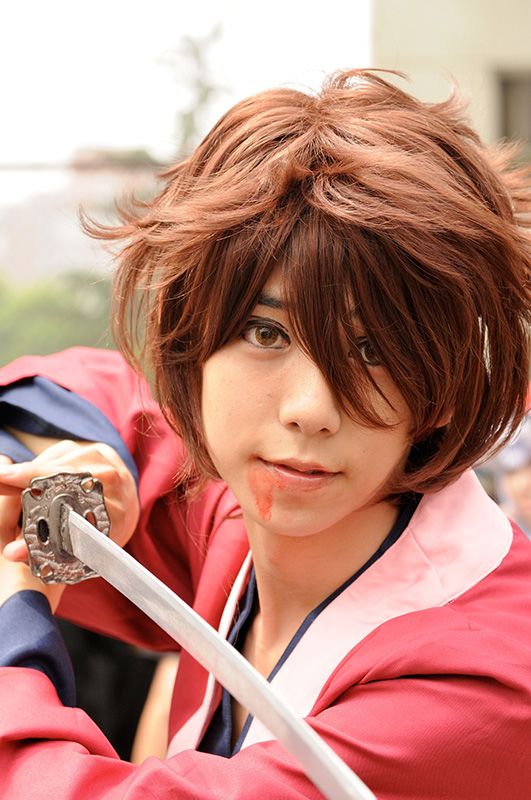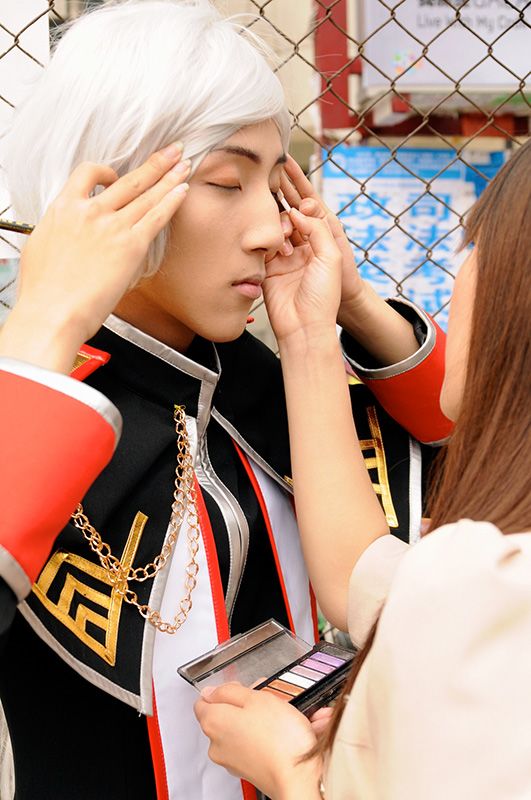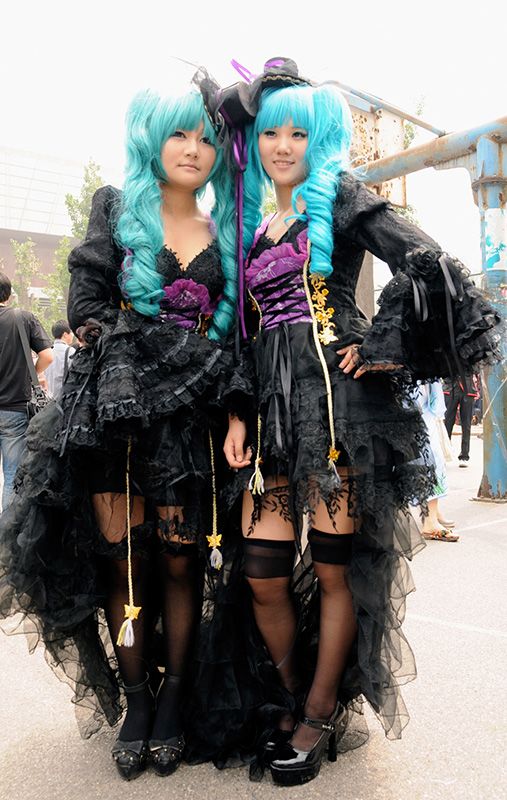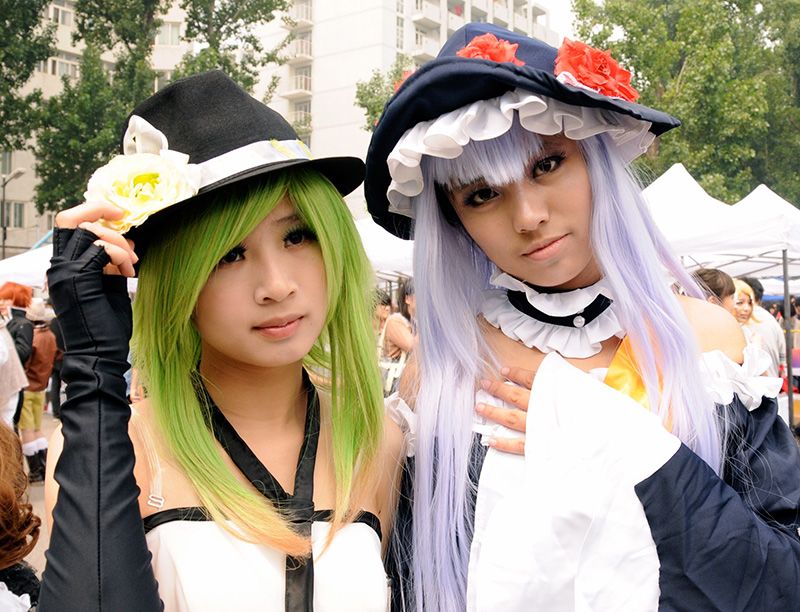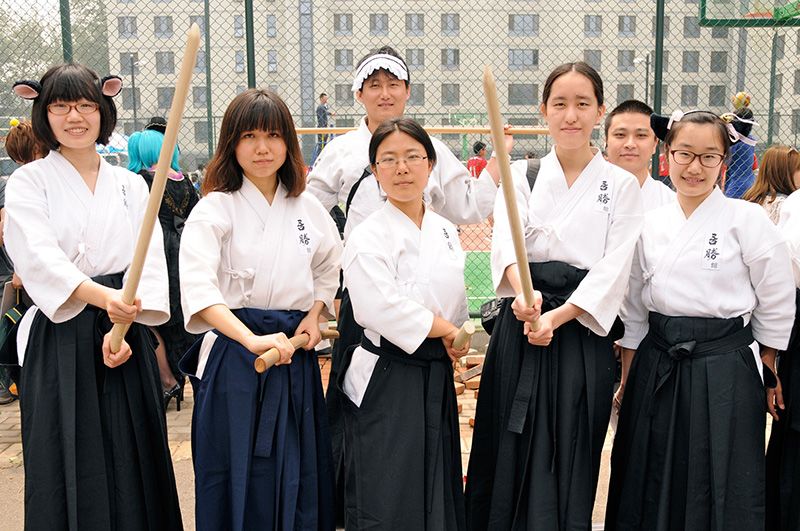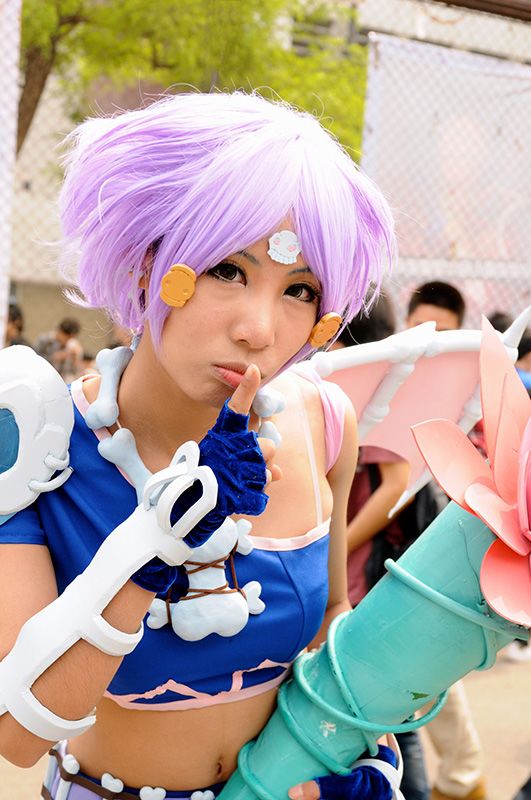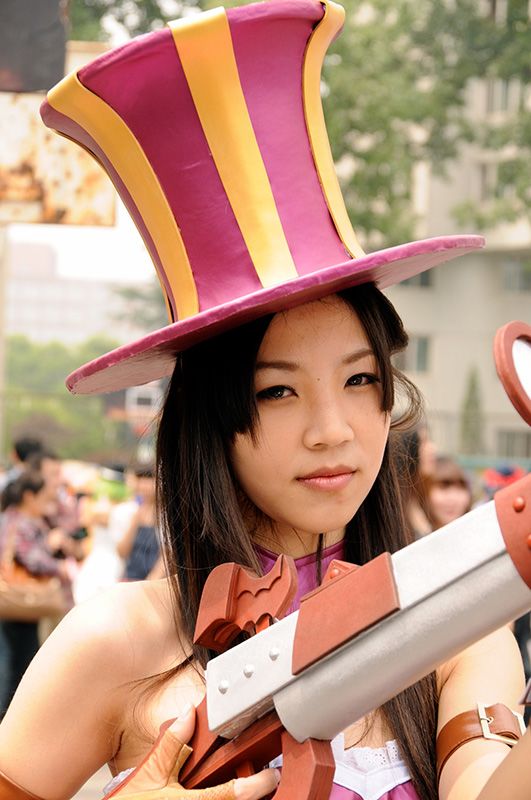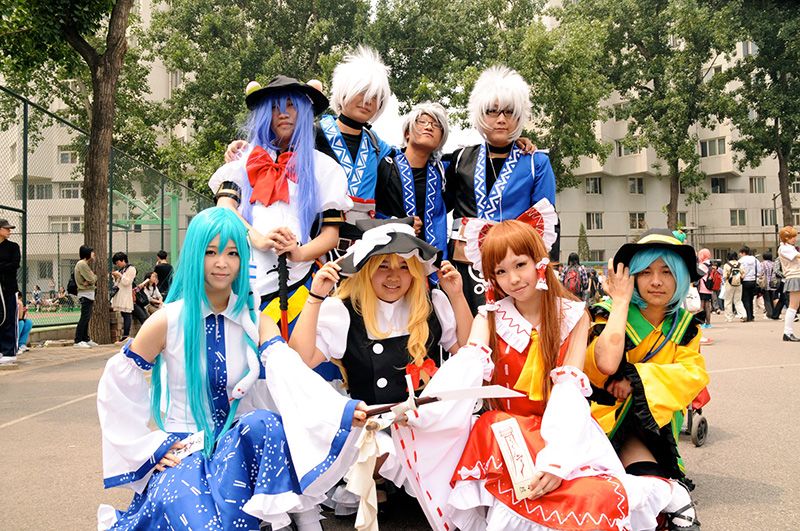
Contemporary Culture Going Global
“Anime” and “Manga” Take Root in China
Economy Culture- English
- 日本語
- 简体字
- 繁體字
- Français
- Español
- العربية
- Русский
An Event For the Fans, By the Fans
A fair is held every year at Beijing’s prestigious Renmin University that brings together fans of anime (animated film) and manga (comics), offering them a chance to meet and buy each other’s original creations. The event is hosted by the university’s club for anime and manga—or dong man as the two are collectively referred to in Chinese. In 2012, the ninth fair so far was held on May 13.
The event is apparently the largest of its kind in China for buying and selling fan publications. For the latest fair, more than 100 exhibitors participated, including some from as far away as Hong Kong and Taiwan, and around 10,000 people attended.
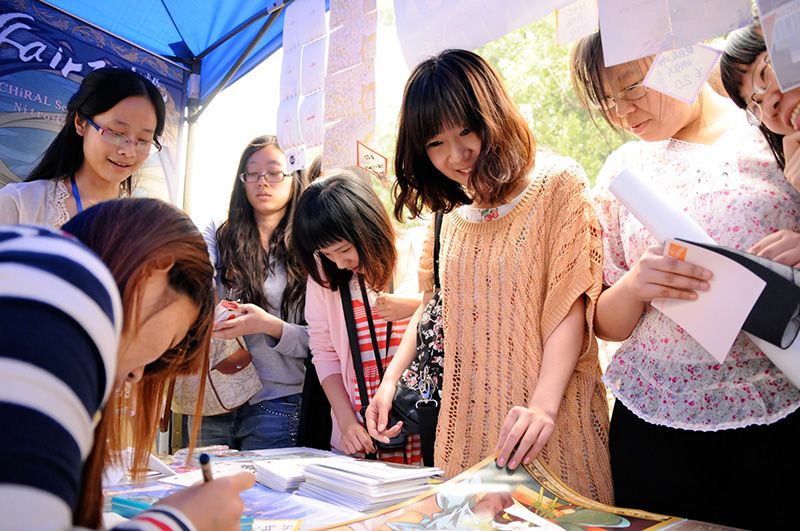 Customers at one of the stalls.
Customers at one of the stalls.
Visitors come to the fair to find items unobtainable elsewhere, created with fans in mind. These items include many derivative works based on Japanese anime, manga, and video-game characters. The quality of the artwork is so good that they could be mistaken for originals. The beautiful posters, calendars, and illustration collections on sale are eagerly snatched up by the attendees. With derivative works copyright issues remains but, like the similar Comic Market event held biannually in Tokyo, rights holders tend to turn a blind eye because such events tend to act as a stimulus for their own sales.
Separating Culture from History
We asked some attendees how they got hooked on manga and anime, and heard the following sorts of responses:
“Japan’s anime and manga are way ahead of anything else. The artistic skill, the storytelling, and the voice actors are all at a high level, so it’s easy to get caught up in it.”
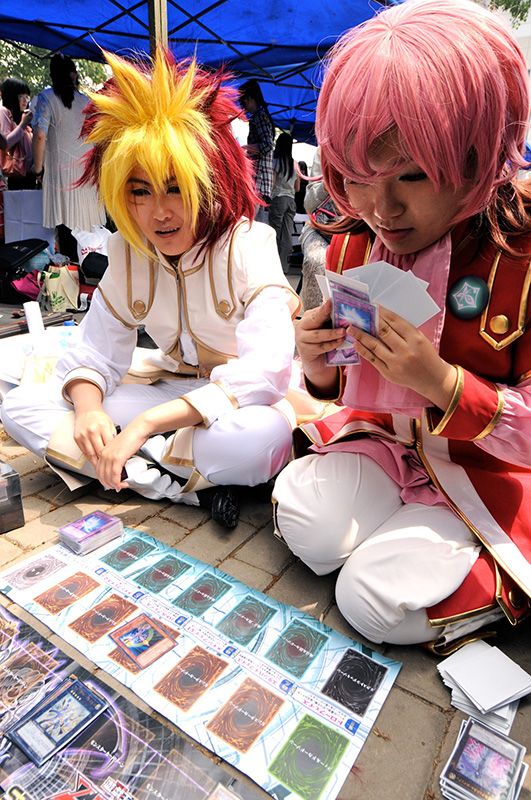 “In Japan a successful manga can spawn television series, movies, publications, and lots of different merchandise. The industrial chain is amazing. China has a long way to go to match it.”
“In Japan a successful manga can spawn television series, movies, publications, and lots of different merchandise. The industrial chain is amazing. China has a long way to go to match it.”
“The content gave me a feel for some of the good qualities of Japanese people, like their earnestness, their consideration for others, and their solidarity when part of a group.”
“Animations here tend to be targeted at the very young. The leading characters are usually small children and the stories are simplistic, so older viewers aren’t really interested.”
“If a Chinese animation isn’t educational, or if it raises any question marks on moral grounds, it won’t be given a pass by the authorities and there have been many cases where a television broadcast is impossible. This is why filmmakers tend to stick to safe themes, based on old classics. This hinders creativity and restricts everything to the traditional.”
Although it is true that many of the attendees were well-established fans, almost everyone had nothing but praise for the fair. Many of the young attendees spend their time at school learning about patriotism and the history of Japanese aggression in China. Yet, in their free time, they are fans of these Japanese creations. When we asked questions on this topic, many said that they draw a line between history and culture, as one person noted: “Of course I feel very patriotic, but my hobbies are separate.”
“One-Child Generation” Grows Up With Anime
The first Japanese anime to create a stir in China was Tezuka Osamu’s Astro Boy, which aired on television in the 1980s after the end of the Cultural Revolution. From that point until the beginning of the new millennium, other anime series followed, particularly those that charmed children such as Doraemon, Ikkyū san, Detective Conan, Crayon Shinchan, and Chibi Maruko-chan.
Children born in the 1980s or 1990s in China are commonly referred to as the “post-80s” or the “post-90s.” These generations were the first to be part of the one-child policy, and have been criticized for being spoiled and brought up in an over-protective environment. Without any siblings, they receive more of their parents’ wealth and command considerable buying power. Members of these generations are said to account for around 300 million–400 million, or 20–30%, of China’s overall population of 1.3 billion. They tend to be demanding, self-assertive young adults, and a not-insignificant portion of them are diehard dong man enthusiasts.
In 2006, however, the Chinese authorities began to ban some foreign animated series from prime-time television out of concern for the “bad influence” they were having on children, and to give a boost to home-grown creations.
As they say in China, though, if there is a policy from above, there is a way around it down below. Pirate copies of Japanese dong man and illegal Internet sites spread rapidly. Many terms from Japanese anime are often used in China today, like otaku (geek), cosplay, and moe (a phrase used to describe semi-romantic/lustful feelings toward female anime characters).
Clean and Straight-Laced in China, Please
Despite the popularity of Japanese manga and anime among Chinese youth, though, there are some sharp differences between what is going on in Japan and what can be allowed under China’s strict regulations. At official events in China, erotic or violent content is forbidden, particularly anything that is sexually suggestive.
The sort of erotic themes on view at events for fans in Tokyo were hardly anywhere to be seen at the May fair in Beijing.
One of China’s top universities, Tsinghua University, held a “maid café” event on April 2, 2012. At maid cafés in Tokyo, young women dressed in maid costumes act as servants for customers, and there are sexual overtones. But the event in China stuck to a healthy, breezy style.
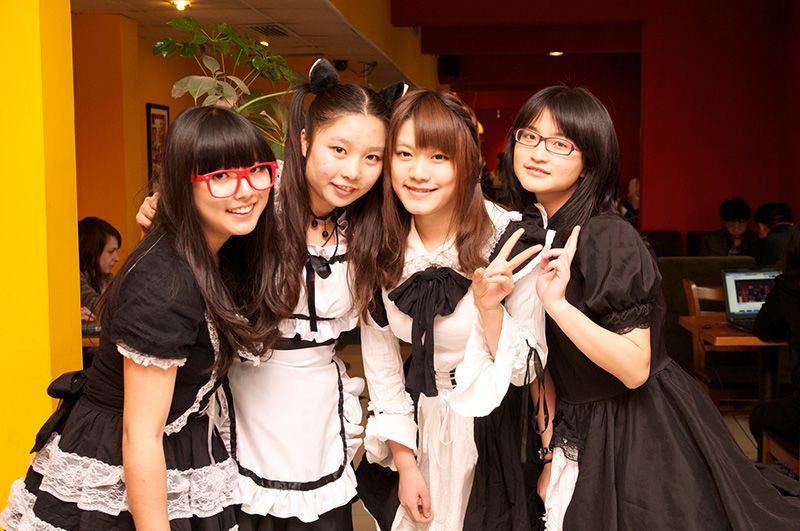 Tsinghua University’s maid café event
Tsinghua University’s maid café event
The maid café event was the second such event hosted by an anime and manga club that students at Tsinghua University founded 13 years earlier, called the “Next Generation Dong Man Society.” The enthusiastic chairman of the club, Lu Yichen, is a third-year engineering student who traveled to Tokyo’s Akihabara district to get a first-hand look at a Japanese maid café. He recalls some of the hard work that went into establishing the event:
“Many Chinese people misunderstand what maid cafés are. I wanted to hold the event in a larger venue but the university refused permission, saying there was too much eroticism and class discrimination. So I really wanted to hold a clean and fun event that positively conveyed Akiba culture.(*1) Lots of students are fans, but very few of them get a chance to visit the ‘sacred land’ of Akiba.”
This is one example of how Japanese subculture is expanding in China while becoming localized at the same time.
Legitimate Business Counters Dong Man Piracy
Although piracy and illegal Internet downloads have contributed greatly to the popularity of dong man in China, there has been a recent expansion of legitimate businesses as well.
TV Tokyo Corporation has linked up with China’s major Internet video broadcasting site, Tudou, to bring a number of popular anime productions to Chinese viewers, free of charge. Some of the most famous ones are Naruto, Bleach, and Gintama. Meanwhile, iQIYI.com, a video broadcasting subsidiary of China’s main portal site Baidu, is also selling legitimate anime content. As of mid-May 2012, one of the most popular series, Detective Conan, had over 200 million weekly views.
Compared to films and TV programs, Internet video broadcasts are currently subject to fewer import restrictions in China. There are high hopes that making legitimate content more widely available will lead to a decrease in illegal viewing, but is hard to gauge exactly how steep that decrease will be. Izumi Shōichi, vice president of a Chinese subsidiary of Japan’s major toymaker Tomy, offers the following comments based on his experience with the company’s licensing business:
“In the anime industry at least, a ‘legal content bubble’ seems to have emerged in China’s Internet market. One factor behind this is the increased attention paid to protecting rights holders in China, but another reason is the greater focus on corporate image, particularly in the case of listed companies, such as the NASDAQ-listed company Baidu. It is now possible to buy anime legally in China. According to a 2008 study by Morgan Stanley, the estimated worth of the anime industry in China will be ¥6.7 trillion in 2014, and it is expected to grow 1.5 times over the subsequent five years. Despite this rapid growth, however, anime in China is still around 20 years behind that of Japan. Given the huge potential in China, many anime-related Japanese businesses are keeping a close eye on the Chinese market.”
A Wealth of Creativity and Ideas
Liu Xiaofeng, a Japanese history professor at Tsinghua University, is an advisor to the Next Generation Dong Man Society. When he was an exchange student at Kyoto University, Liu used to pore over manga like Yawara!, Dragon Ball, and works by Tezuka Osamu. As both a fan himself, and an educator, he welcomes the expansion of legal anime businesses in China. He explains the appeal of dong man:
“It comes down to the wealth of creativity and ideas. Dragon Ball is based on the classical Chinese novel Journey to the West and features stories about small capsules that contain airplanes and other fantastic ideas. Works by Tezuka Osamu and Miyazaki Hayao tackle philosophical issues on a global scale. The strength of Japanese dong man is the knack for taking traditional stories from all over the world and turning them into something new and original.”
For the past few years, a Chinese anime television series has also been a big hit. The English translation of the title is Pleasant Goat and Big Big Wolf. US animations featuring 3D and computer generated graphics, such as Kung Fu Panda and Shrek, have also been popular in China. And Izumi Shōichi points to a trend toward a westernization of the Chinese market.
The Chinese anime market reacts quickly to innovation and the influence of Western trends is growing. How can Japanese animation, with its strengths in traditional 2D techniques, compete with that? Anime and manga are an important part of Japan’s soft power and the country needs to carefully consider how to answer that question.
(Photographs by Sado Tamako.)
(*1) ^ Short for Akihabara, where the first maid café was established.
